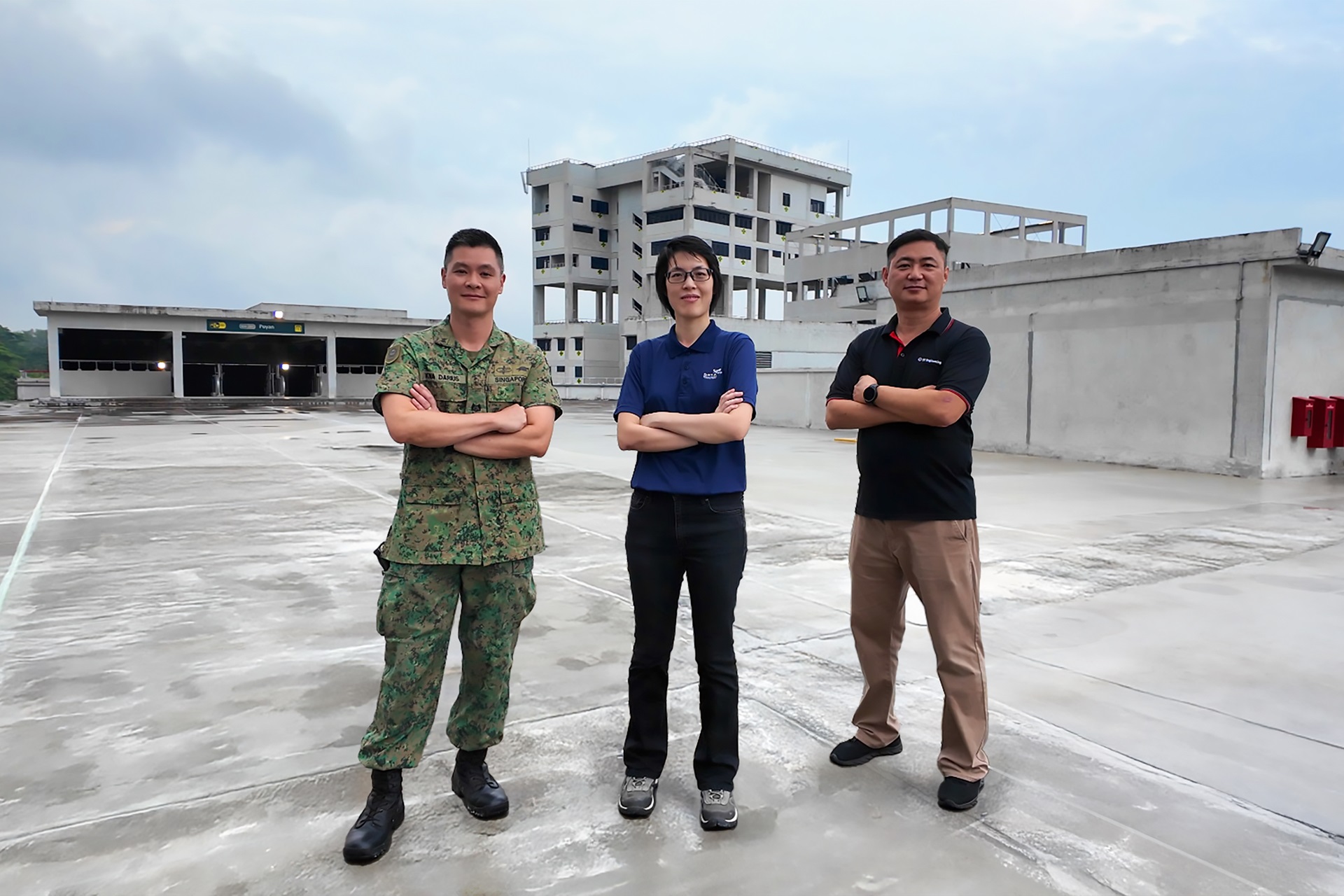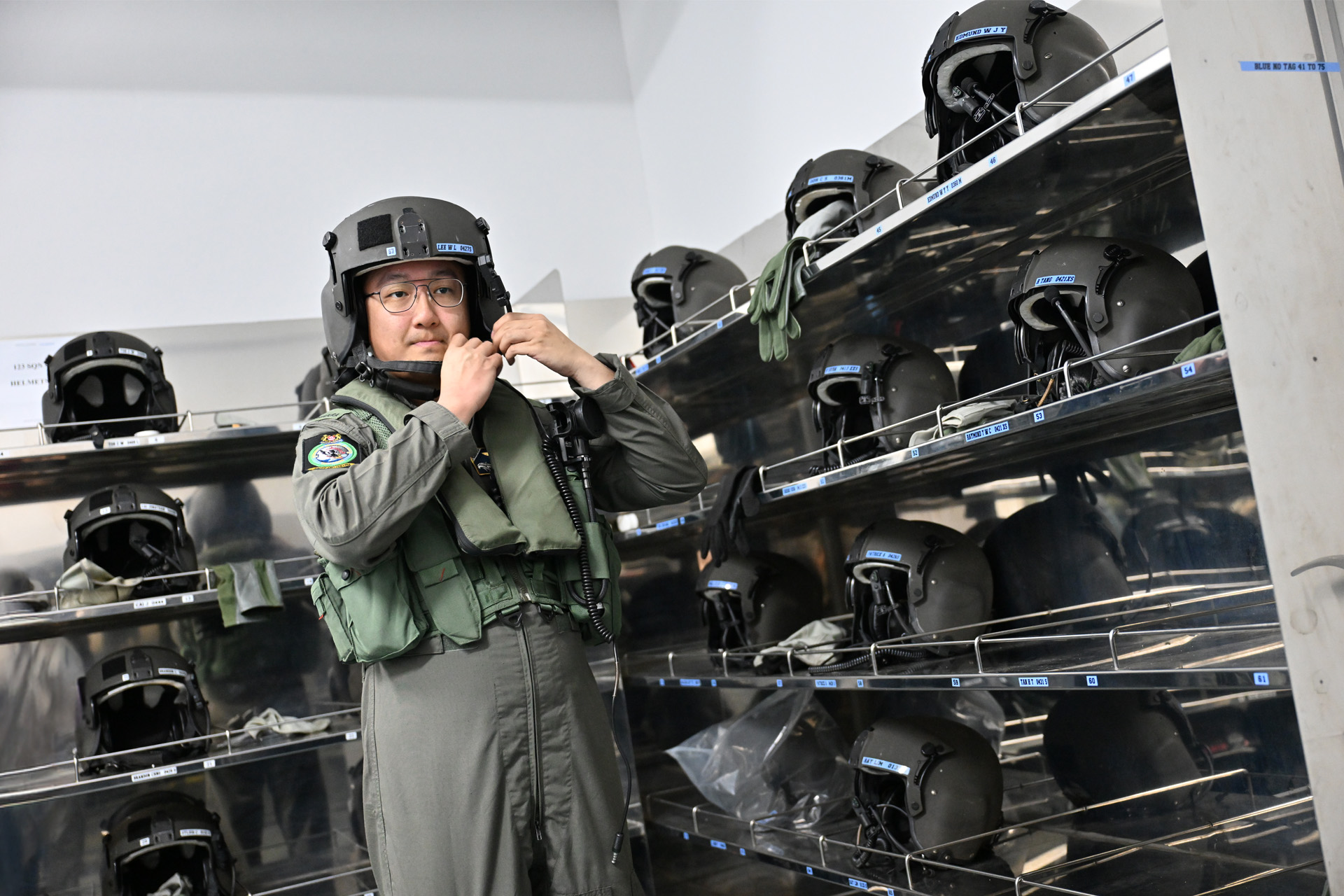Cooking, arguably one of the world's oldest jobs, needs no introduction. However, when the job entails working on a ship in volatile conditions with limited supplies, it's a little more than just putting food on the table.
Meet the Republic of Singapore Navy (RSN) chefs, the unsung heroes of every sea sortie.
Calculating food requirements, planning menus and maintaining supplies, the naval chefs make sure that the crew are fed enough to sail and fight.
And that s just scratching the surface of what they really do.
The sea route less sailed
For some naval chefs, the journey begins with little more than a love for food and a sense of adventure, as was the case for Military Expert (ME) 2-2 Wisley Tay, the Chief Chef of submarine RSS Swordsman.
ME2-2 Tay signed on with the RSN during his Basic Military Training (BMT) days 22 years ago. Despite having no experience in cooking, he took a leap of faith, armed with just an eye - or rather, tongue - for flavour. "I like to sample good food and then try to replicate the taste," he said.
As for mine counter-measure vessel (MCMV) RSS Punggol s Chief Chef ME1-2 Jonathan Neo, it was the desire to travel the world that led him to jump on board as a naval chef three and a half years ago.
Even though his Diploma in Culinary Skills from the Singapore Hotel and Tourism Education Centre (SHATEC) saw him working the restaurant line and rubbing shoulders with international chefs, this did not satisfy the 23-year-old's wanderlust. "(By joining the Navy) I get to sail and experience cultural exchanges (and) see the world."
Since 1998, the RSN has been engaging SHATEC to equip new enlistees with professional cooking skills. The collaboration provides naval chefs such as ME2-2 Tay the opportunity to obtain diplomas in various culinary skills.
This is a far cry from the past, when chefs from the Army, Navy and Air Force would train together at the Army Training School in Seletar Camp. However, the course was primarily designed for Army chefs. ME2-2 Tay, 40, recalled: "One of the requirements of the course on field kitchen cooking was to convert a three-tonner into a mobile kitchen!"
Now, potential chefs without experience have to complete their BMT and a three-month-long Basic Specialisations Course (formerly known as the Junior Rating Course) to learn basic seamanship skills before beginning their training as chefs.
A naval chef's life for me
A naval chef s primary responsibility is to oversee all aspects of the crew's food supply during a sortie. Thus, like the rest of the operational crew, his work begins long before the ship sets sail.
From calculating the total amount of food required for a sortie to planning the menu for three to four meals a day, he must ensure that the ship carries enough supplies to last the entire trip.
Careful calculations are a must, especially for smaller ships and submarines. ME2-2 Tay explained: "The challenge is in the limited storage. I cannot have a surplus, so I must plan the exact amount of food required."
Conversely, such prudence can also result in another problem: ships risk running out of food, particularly when sorties are suddenly extended. Thus, chefs must keep a close watch on food supplies at all times. "If I receive notice at the last minute that we won t be returning soon, then I need to source for fresh food supplies or minimise the serving rate," said ME2-2 Tay.
Food supply management is no easy task, which is why junior chefs usually cut their teeth working on smaller ships such as patrol vessels (PVs), where sorties are shorter and crew size is restricted to between 40 and 50 personnel.
With smaller crews, chefs have more opportunities to pick up seamanship skills. In addition, they get the chance to train up their sea legs as small ships are more susceptible to the roll of waves.
On top of galley (the ship's kitchen) duties, naval chefs perform a secondary operational role, doubling up as Medical ICs (In-Charge) to lead the medical team in assisting doctors and medics during long deployments. While all crew members are equipped with basic first aid and cardiopulmonary resuscitation (CPR) skills, chefs are additionally trained to administer the automated external defibrillator (AED) and intravenous drips.
Naval chefs also play a lesser-known role: that of a gunner. To take on this role, chefs are trained in the use of the weapon and voice commands. However, this role is only restricted to chefs on board PVs, which carry machine guns.
Working the galleys
A chef s day is usually long, beginning when the crew is still asleep and ending only after the last seaman has gone to bed. ME2-1 Xanda Chua, 27, who is the Chief Chef on board frigate RSS Formidable, knows this all too well.
To get the ship ready for a dawn sail-off, he has to be in the galley four hours before that, serving breakfast to a crew of up to 100. Due to the large crew size, he works with a team of three others, comprising a Junior Chef, a Senior Chef and a Supervisor.
He shares the responsibility of overseeing mealtimes with the Supervisor, who prepares breakfast and lunch while he sees to the dinner and night snack. Said ME2-1 Chua: "This is to ensure that we have enough rest. Once you don t have enough rest, there will be accidents, (caused by,) for example, blurred vision and fatigue."
And when one is working around sharp knives and boiling water while at the mercy of the open sea, maintaining alertness is of utmost importance. The chefs' greatest concern is the sea state (condition of the surface of the sea).
Although safety measures are in place to prevent accidents, such as the use of hotplates instead of open flames and metal railings affixed for stability, little can prepare the chefs for a sudden rock caused by a rolling wave or passing ship.
Horror stories of rice pots flying off counters even after being secured to surfaces are common. ME1-2 Neo recounted an incident: "During a sail to Port Blair in the Indian Ocean, the ship sailed into the wave of a passing container vessel and caused oil from the deep-fryer to spill out. The meals were kept simple after that. But that s what keeps things interesting as well."
While surface conditions are less of a problem for submarines, ME2-2 Tay often has to contend with sudden pitches: "Sometimes we have to dive in a short span of time. We face steep angles and this will cause my utensils to move around. I still have to cook, but I'll use a bigger pot and less water."
To better prepare for such situations, he attends exercise briefs with the crew to keep himself abreast of the training schedule and anticipated sea state.
An unusual problem that ME2-2 Tay faces is the noise created when cooking, which can generate an acoustic signature for the submarine. "I can't chop with a big knife, I have to slice slowly, because the sound will make us vulnerable to sonar tracing and give our location away."
This is the same for the MCMV, which, in turn, detects submarines. To reduce the noise produced, ME2-2 Tay uses wooden or plastic stirrers.
Don't mess with the chef
Considering how seriously Singaporeans take their food, naval chefs must wield a lot of power as guardians of the galleys (and stomachs). ME2-2 Tay laughed while sharing a running joke on board ships that "the one and only person you must be friends with is the chef". The chefs are aware of the importance of their role and they, too, take their food very seriously.
"The morale of the crew is on us," ME1-2 Neo explained. "They look forward to their meal after a long day. So, I will try my very best to give them what I can."
The chefs also revealed that their crews often crave local fare during long sorties, with hawker favourites such as fried Hokkien mee and laksa topping the list.
However, as ingredients are limited to items that store well, the chefs have to be innovative when it comes to food creation. "We use bread to make carrot cake," ME2-1 Chua let on with a cheeky grin. "Sometimes, the crew feels like eating mee pok, so I use fettuccini and cook it longer (until) it tastes a little bit like mee pok."
The chefs sometimes buy additional ingredients on their own accord, just to ensure that their crews eat better. Other times, the ships' officers pay for special ingredients as a means of boosting crew morale, such as yu sheng during Chinese New Year and fresh cockles for laksa and fried kway teow.
Apart from food quality, ME2-2 Tay has also taken it upon himself to watch the crew's Body Mass Index (BMI). Through self-study and courses, he has been learning about calorie intake and now educates his crew on eating healthily.
"We need healthy and fit bodies on board the submarine. So, based on the recommended calorie intake and output for the day, I will advise them to spread the amount across meals. If I notice someone eating more and working out less, I will give him a friendly reminder." Beaming like a proud father, he added: "My sub has the best BMI average among the fleet!"
On the greatest satisfaction of being a chef, the answer was unanimous: Seeing the crew enjoy a meal. Perhaps ME1-2 Neo speaks for all naval chefs when he said: "Even though the sea state might be very bad sometimes, or I'm very tired, I still wake up and just focus on cooking.
"At the end of the day, it s about being able to boost everyone's morale and making sure everyone is satisfied with his food."





